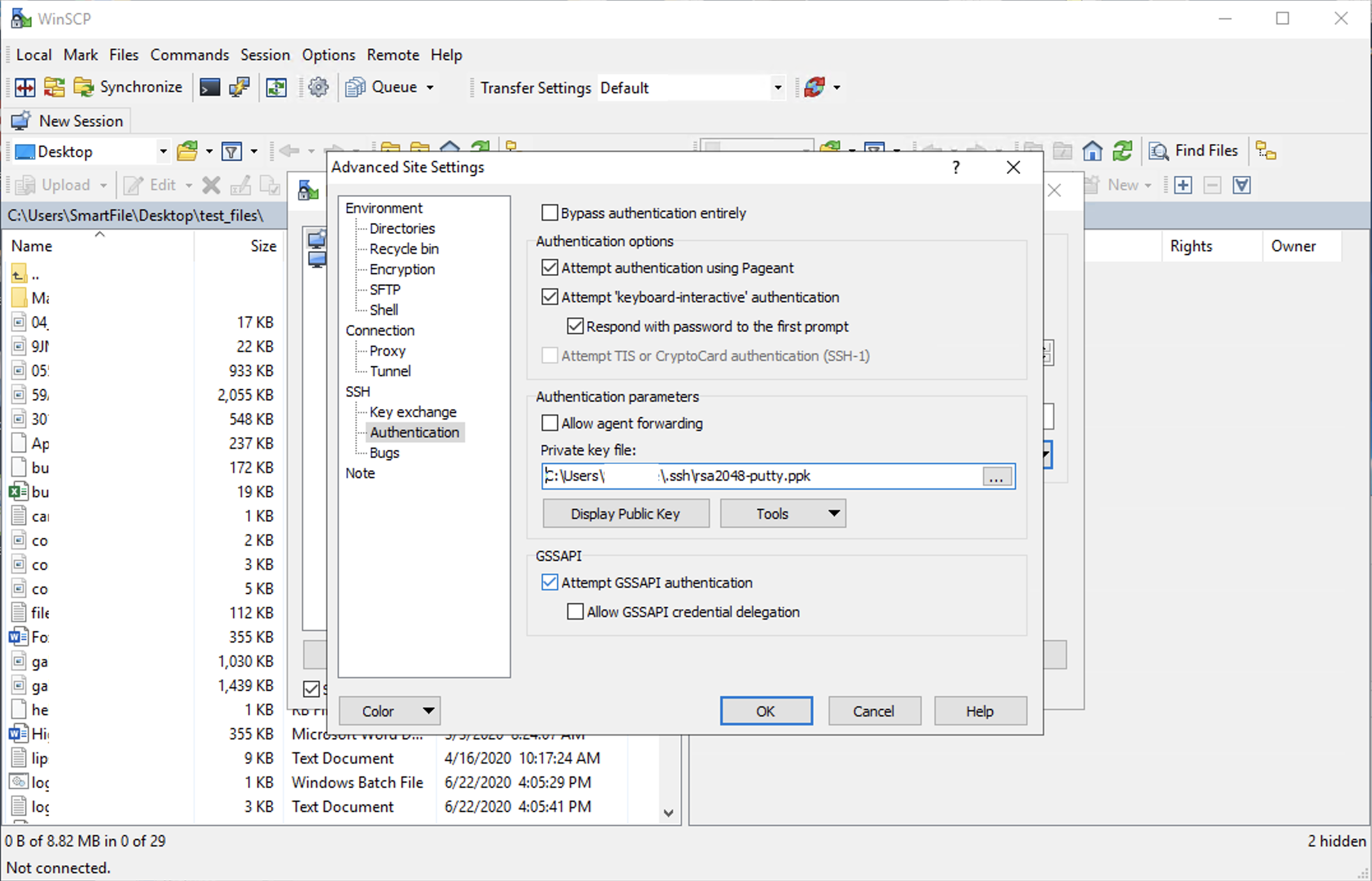

Substitute the path to your WordPress, inside the double quotes. Tip: I add a line on my hosting account’s ~/.bashrc file WP="$HOME/www/YOURDOMAIN/public_html" Your scp commands would reference GLI: for example copy a file from your computer’s ~/sites/ folder to your hosting WordPress folder scp ~/sites/mysite/file1.txt GLI:/home/YOURUSER/www/YOURHOSTNAME/public_html/file1.txt ssh/config file, you would connect via SSH with simply: ssh GLI # /home/YOURUSER/www/YOURHOSTNAME/public_html/wp-content # ~/www/YOURHOSTNAME/public_html/wp-content IdentityFile /home/YOURCOMPUTERNAME/.ssh/gli-sg For my convenience, I put the two forms of path to WordPress as comments: Host GLI For IdentityFile, put the path to your private key file. Fill in your hosting company’s connection info (user, host, port). For Host, put the initials you use for your site you will be typing this in the SSH terminal command. In the Advanced tab, fill in the path on your computer and on the server to your WordPress public_html folder.Īdd the SSH details to your ~/.ssh/config file. ppk file (gli-sg.ppk) in Site Manager, General tab, Logon Type: key file, specify the Key file. You will use it in FileZilla and in your SSH Config file. I paste this information into LastPass, in the Notes for the SSH record for this site. While you are in SSH Keys Manager, in the Manage SSH Keys section, click the “hamburger” 3 dots under “Actions” at the right of the key you just generated, click “SSH Credentials”. In SiteGround Site Tools, Dev section, SSH Keys Manager section, in the Add New section click the Import tab, and then click “Import Key from File” and browse to the public key you created (with the.

To see the key details including comment: ssh-keygen -l -f gli-sgĪll SSH keys should have strict permissions (probably set automatically, check your system): chmod 600 gli-sg* Those commands generate a private key file (gli-sg with no extension), a public key file (gli-sg.pub) and a Putty-format key file (gli-sg.ppk), all in your ~/.ssh folder. (I advise against using no password, even though it is permitted.)
#Filezilla ssh key no password password
You will be prompted for a password for the SSH key I advise using one generated by and stored in your password keeper. Substitute your abbreviation for your site and hosting company where I have “gli-sg”, and substitute your comment in double quotes (I use the comment to keep track of which domain name and host the key is for). Here’s the brief version, then I’ll give an explanation of each of the steps. Puttygen gli-sg -C " SG" -O private -o gli-sg.ppk Ssh-keygen -t rsa -b 4096 -C " SG" -f gli-sg Quick version, if you only need the commands cd ~/.ssh You can also restrict the IP address (or IP range) that can access a key if you are using home internet providers, be prepared for the company to change your IP address without warning, which would make your login fail. You can copy your private key to your other computers (with pretty much any operating system) if you want, although for even better security you use different keys for each device. The generated files are simply text format. You can ask your hosting company for instructions for their SSH and other file transfer programs.) (I’ll give instructions for installing the keys in FileZilla FTP and in SiteGround hosting. These instructions for making keys are standard Linux commands they should work for almost any flavor of Linux, any FTP program and almost any website host. Most other SFTP programs, and most other website hosting companies, use these same two formats. You need to have one format of SSH key for FileZilla, and one for Terminal to connect to SiteGround.
#Filezilla ssh key no password windows
Instead of a hacker needing your password, they need to get both your SSH private key and the SSH key’s password.Īny Linux or macOS computer can generate SSH keys using steps I’ll cover WIndows computers need a similar process. Using SSH keys is more secure than using a password, with either SFTP (secure FTP, the data is encrypted) or the terminal.

You can use SSH keys to connect with Terminal to your hosting account, and also to connect with SFTP programs like FileZilla.


 0 kommentar(er)
0 kommentar(er)
